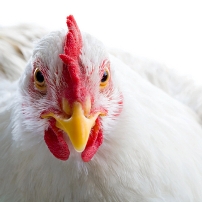High feed prices kill poultry producers

The combination of rising feed costs, slowing demand and overproduction is a deadly one that is beating poultry processors and growers in the US.
The big publicly traded poultry companies – Tyson Foods, Sanderson Farms and
Pilgrim’s Pride Corp. – have all seen their stock prices tumble in the past 52
weeks. Sanderson shares have fallen 21%, Tyson shares 68%, and shares of
Pilgrim’s Pride have plummeted 99%. On the consumption side people are dining
out less often, especially at casual sit-down restaurants where chicken often is
a menu staple. Sales to supermarkets and other retailers haven’t grown enough to
offset the lost business, experts say.
High feed prices
If
anything has constrained the poultry industry, it has been sky-high feed prices.
Record-high prices for corn and soybeans have caused very stiff economic
challenges for growers and processors. Next to that poultry processors and
farmers are also paying more for fuel and electricity. Soybeans traded for $9.02
a bushel earlier this week on the Chicago Board of Trade, up from $6.28 a bushel
in January 2006. Corn, which was trading at around $2.25 a bushel in early 2006,
reached a peak of $8 a bushel this summer, amid flooding in the Midwest and
diversion of corn for making ethanol.
No Russian
outlet
Adding to the industry’s woes is Russia’s attempts to curtail
imports of US poultry. Russia is the largest export market for U.S. chicken, and
the country has been trying to force lower import quotas to protect its own
poultry industry. The result is that importers are wary of bringing in US
poultry for fear they won’t be able to sell it. Instead of selling their poultry
in Russia, US companies are selling it nationally, causing an oversupply that is
driving down prices and preventing processors from raising prices to cover their
added costs.
Reducing production
One consequence of the
downturn is that processors are having the farms that raise chickens for them
increase the interval between starting new flocks. This results in chicken
houses being empty for longer periods thus negatively affecting the income of
the poultry farmers. In an effort to cut production, some processors have scaled
back operaions to four days a week.











